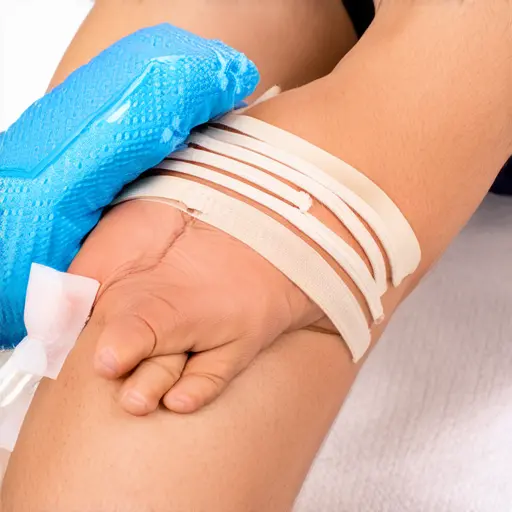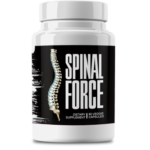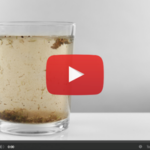This Village-Made Chinese Pain Reliever Eliminates Back And Joint Pain!
Avoid Surgery with These Medial Knee Pain Treatment Tips

Knee Pain Relief Without Surgery: Your Guide to Managing Medial Knee Pain
That nagging pain on the inner side of your knee making everyday activities a challenge? You're definitely not alone. Whether you're an athlete or spend most days at a desk, medial knee pain can throw a wrench in your daily routine. The good news? Surgery isn't always the answer. Let's walk through some proven ways to ease your discomfort, get you moving better, and potentially avoid going under the knife.
What's Really Causing Your Inner Knee Pain?
Medial Knee Pain 101
When we talk about medial knee pain, we're focusing on that tender spot along the inside of your knee joint. This area is home to some important players - your medial collateral ligament (MCL), the shock-absorbing medial meniscus, and key tendon attachments. Unlike general knee aches, this specific pain often points to issues with these particular structures.
Why Does the Inside of My Knee Hurt?
Several culprits could be behind your discomfort:
- MCL injuries: Common in athletes, these sprains or tears often happen during sudden twists or impacts
- Meniscus tears: That cartilage cushion on your inner knee isn't invincible
- Pes anserine bursitis: Inflammation where tendons meet below the knee - ouch!
- Osteoarthritis: Wear-and-tear that particularly loves the inner knee compartment
- Medial plica syndrome: Irritation of a sneaky little fold in your knee lining
Is It Really Medial Knee Pain?
Here's how to tell: Does it hurt specifically on the inner knee, especially when going downstairs or twisting? Unlike kneecap pain, it probably won't improve with straightening exercises. If this sounds familiar, you're likely dealing with true medial knee issues.
Kicking Pain to the Curb Without Surgery
The Trusty RICE Method
When pain first strikes, remember this golden rule:
- Rest: Give it a break for a couple days - your knee will thank you
- Ice: 15-20 minutes every few hours can work wonders
- Compression: A supportive sleeve or wrap can help
- Elevation: Prop it up above heart level when possible
Over-the-Counter Helpers
NSAIDs like ibuprofen can tackle both pain and inflammation. If those don't agree with you, acetaminophen might take the edge off the pain (though it won't fight inflammation). Always check with your doc before starting any meds.
Why Physical Therapy Rocks
A good PT can be your knee's best friend by:
- Building up the muscles that support your knee
- Getting your joint moving smoothly again
- Fixing movement patterns that might be causing trouble
- Guiding you safely back to your favorite activities
Knee-Friendly Moves to Try at Home
Strength Builders
Stronger muscles mean less stress on your knee:
- Straight leg raises: Simple but effective for quads
- Clamshells: Great for hips, which surprisingly affect knee alignment
- Mini squats: Go shallow and focus on form
Loosen Up With These Stretches
Tight muscles can pull your knee out of whack. Try:
- Standing hamstring stretch (30 seconds per side)
- Butterfly stretch - hello, inner thighs!
- Seated calf stretch with a towel
Stay Active Without the Ouch
These activities are easier on angry knees:
- Swimming - the water's resistance is gentle but effective
- Stationary biking (just adjust that seat height properly)
- Elliptical training - all the motion without the impact
Daily Habits That Help Your Knees
Weight Matters
Here's some food for thought: Every extra pound you carry puts about four pounds of pressure on your knees when walking. Shedding even a little weight (think 5-10% of your body weight) can make a noticeable difference, especially if arthritis is involved.
Shoes Make a Difference
Those worn-out sneakers might be part of the problem. Supportive shoes with good arch support can help align everything from your feet up to your knees. If you're flat-footed, custom orthotics might be worth considering.
Know When to Say No
Some activities just aren't knee-friendly when you're hurting. Might want to take a break from:
- Deep squats or kneeling
- High-impact stuff like running or jumping
- Sports with quick direction changes (we're looking at you, basketball)
Alternative Approaches Worth Considering
Acupuncture: More Than Just Needles
Research shows those tiny needles might actually help with knee osteoarthritis pain by triggering your body's natural pain relief. Many patients report feeling less stiff and moving easier after several sessions.
Chiropractic Care for Knees?
Yep! Chiropractors can address joint and muscle issues throughout your legs that might be contributing to knee pain through:
- Gentle joint adjustments
- Soft tissue work
- Targeted exercises
The Magic of Massage
A good massage therapist can:
- Release tension in those tight thigh muscles
- Boost blood flow to help healing
- Help "confuse" your pain signals (thanks, gate control theory!)
When It's Time to Call the Pros
Red Flags to Watch For
Definitely see a doctor if you notice:
- Pain so bad you can't put weight on it
- Swelling that sticks around more than a few days
- Your knee locking or catching
- No improvement after 4-6 weeks of home treatment
Next-Level Treatments
When basic care isn't cutting it, your doctor might suggest:
- Cortisone shots: Powerful inflammation fighters
- Hyaluronic acid injections: Like oil for a creaky hinge
- PRP therapy: Using your body's own healing power
Is Surgery Inevitable?
It might be an option if:
- Nothing else has helped after several months
- You've got serious structural damage (like a complete ligament tear)
- Arthritis has severely limited your life
Keeping Knee Pain From Coming Back
Long-Term Knee Love
Show your knees some TLC with these habits:
- Strength training a few times a week
- Always warming up before activity
- Slowly increasing exercise intensity
Move It or Lose It
Regular movement keeps joints happy. Aim for:
- About 150 minutes of moderate activity weekly
- Daily stretching for those leg muscles
- Balance exercises to stay steady on your feet
Small Changes, Big Difference
Little tweaks to your routine can help:
- Take standing breaks if you sit a lot
- Lift with your legs (you've heard it before, but it's true!)
- Swap high-impact activities for kinder alternatives
Wrapping It Up
Your Pain Relief Cheat Sheet
To recap, effective medial knee pain management usually involves:
- Jumping on it early with RICE
- Smart exercises that strengthen and stretch
- Lifestyle tweaks to ease the load
- Professional help when needed
Final Word
While some severe cases might eventually need surgery, many people find real relief through these conservative approaches. The key? Consistency and patience - healing takes time. Listen to your body, stick with it, and you might just avoid the operating room altogether.
Have you found ways to manage medial knee pain without surgery? We'd love to hear what worked for you - drop your story in the comments!








